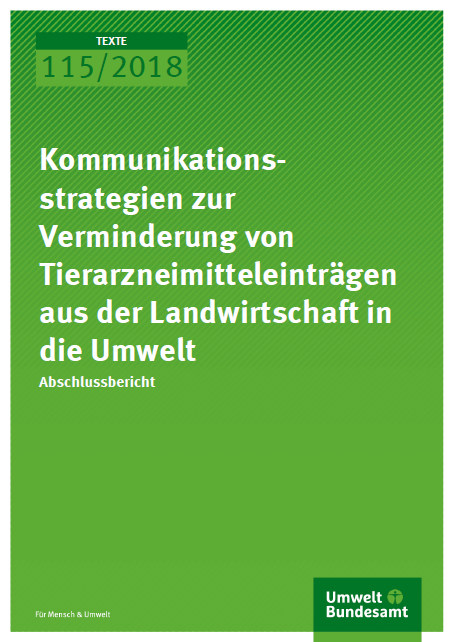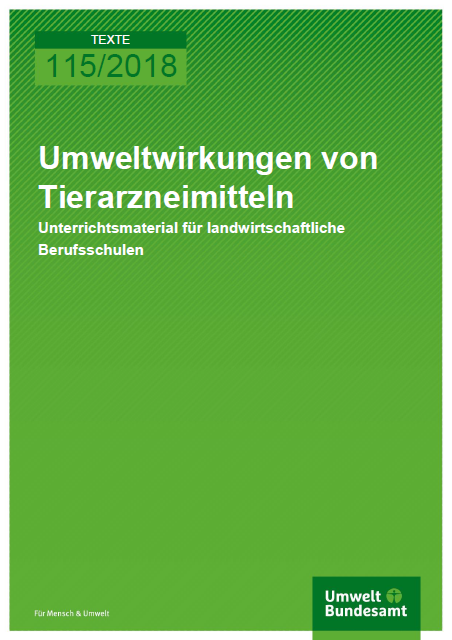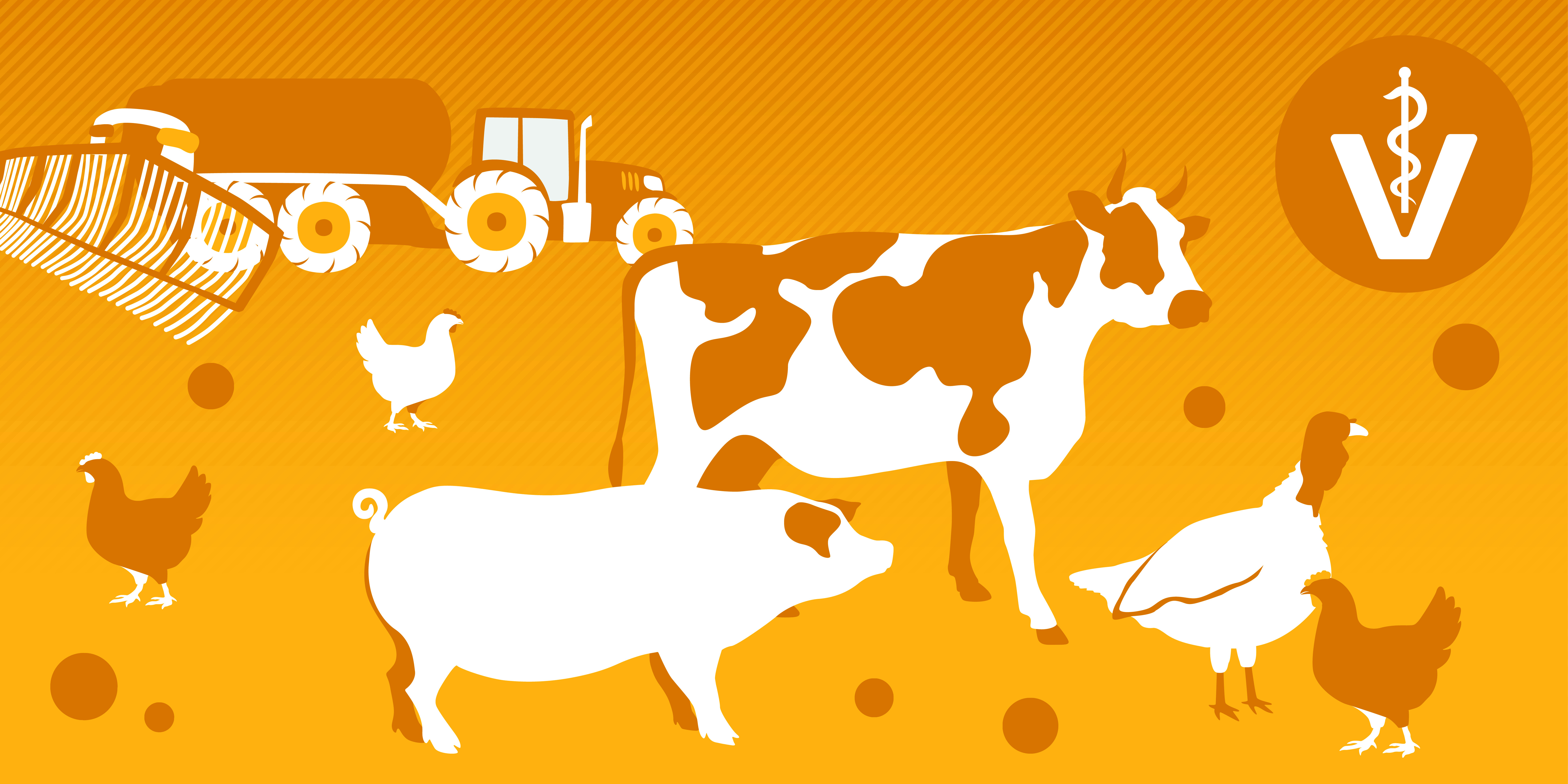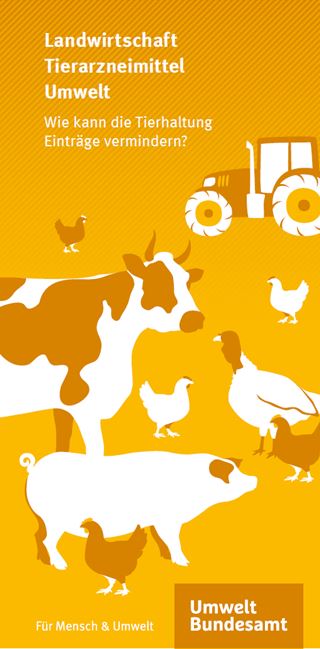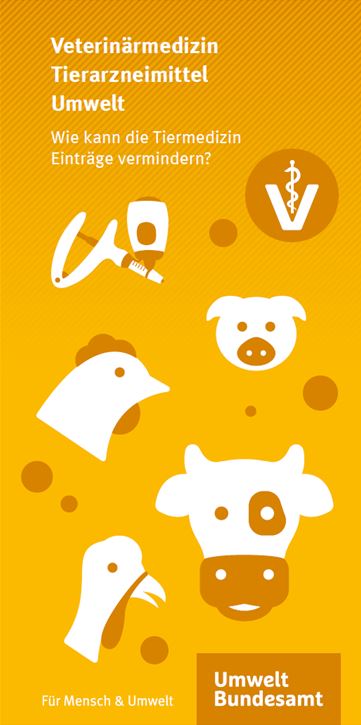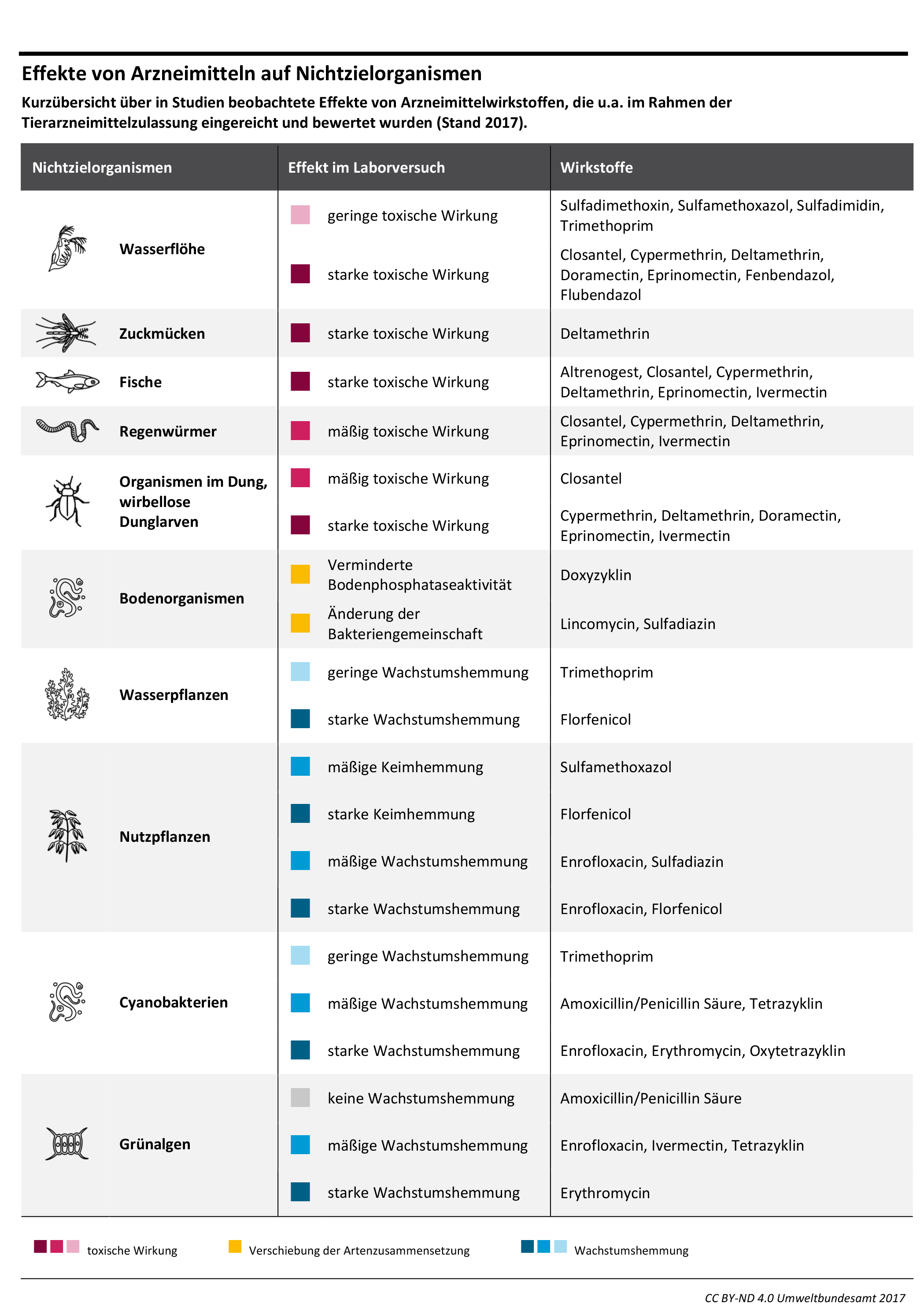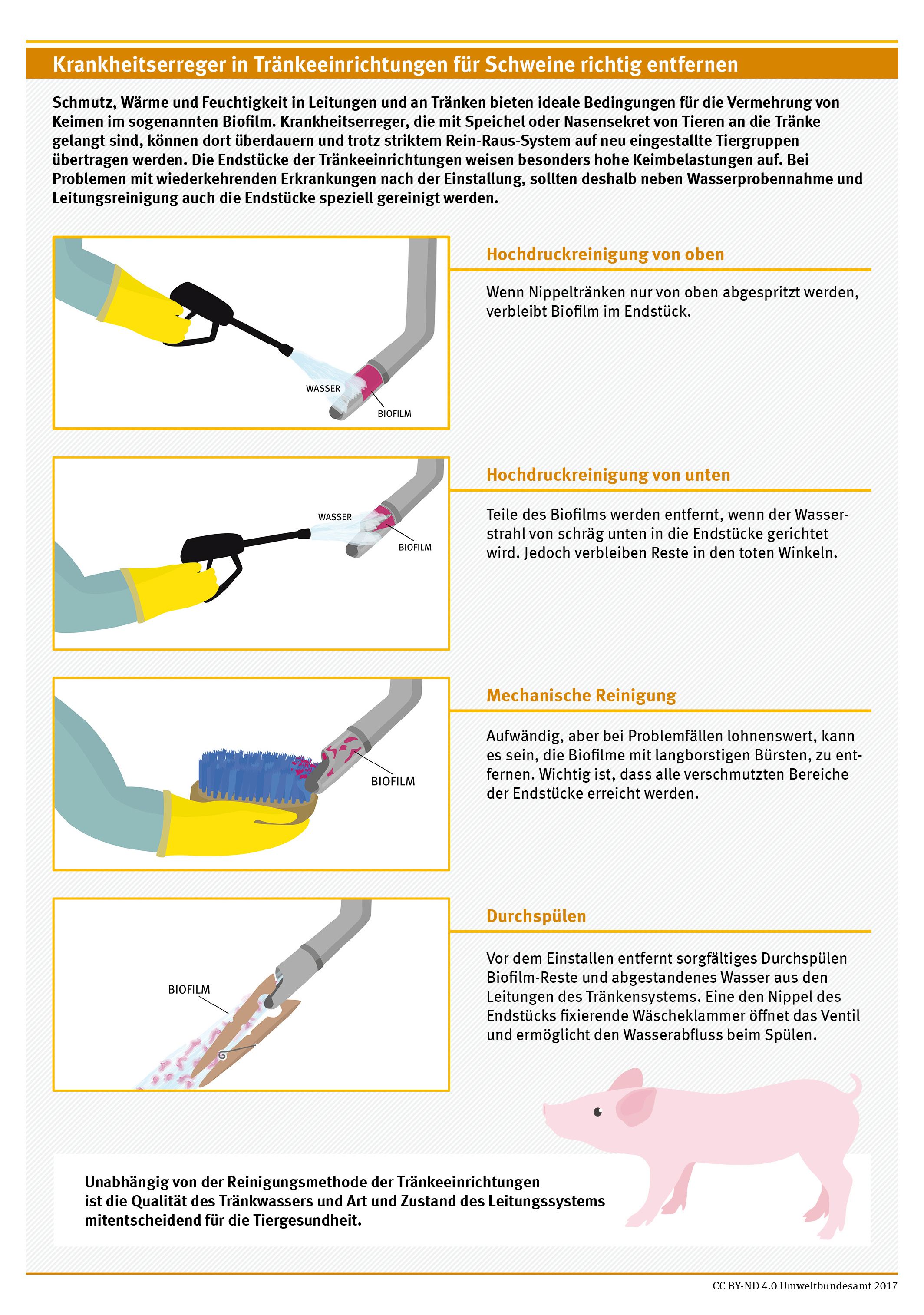Communication Strategies for Reducing Agriculture-related Entry of Veterinary Pharmaceuticals into the Environment
- Project
- Duration
-
-
Residues of veterinary medicines (VETs) can increasingly be detected in soil and water and are becoming the focus of scientific and public debate. This project created information and teaching materials for veterinarians and farmers, in order to make them aware of how to prevent VETs from being introduced into the environment:
- UBA online platform on veterinary drugs in the environment, which can be accessed at uba.de/tierarzneimittel,
- Information brochures for veterinarians and farmers,
- learning and teaching materials for veterinarians and farmers in training and practice, and
- teaching material for agricultural vocational schools.
Additionally, five infographics have been developed for illustration and knowledge transfer in the information materials:
- Tierarzneimittel in der Umwelt: Abbau, Verlagerung und Verbleib
- Effekte von Arzneimitteln auf Nichtzielorganismen
- Verschleppung von Tierarzneimitteln im Stall
- Umwelt-Checkliste für den Einsatz von Tierarzneimitteln
- Krankheitserreger in Tränkeeinrichtungen für Schweine richtig entfernen
The teaching materials and infographics are available to teachers, learners and other interested parties for free use.
Entry pathways and environmental impacts of veterinary medicinal products
As with human medicines, veterinary medicines are only partially absorbed by the animal's body. Significant proportions of active substances are excreted unchanged or as metabolites - for antibiotics it is between 40-90%. these biologically active substances can enter the environment if, for example, animal excrements are applied as agricultural fertilizers on agricultural land. Veterinary medicines that enter the environment are partially degraded, partly absorbed by organic and inorganic matter and also transported in dissolved as well as sorbed form into water bodies. From the agricultural areas, veterinary medicines and metabolites can seep through the unsaturated soil zone to groundwater, or they can enter surface waters through drainage or surface runoff, where they can impact aquatic organisms. Their biological efficacy can also have consequences for soil organisms, which in turn can have an adverse effect on soil functionality.
Communication of risks of veterinary medicines in the environment
The environmental impact of VETs is a complex issue and many stakeholders are not aware of the need for action. At present, the environmental impact of veterinary medicines is rarely discussed in the education and training of veterinarians and farmers. There is little information and training material available for these groups. Similarly, little material is available on alternatives to the use of veterinary medicines and disposal and recovery of excretions containing veterinary drug residues and resistant microorganisms.
Aim of the project
As part of a preceding study on this project, an overview of concepts and measures for the reduction of VETs in the environment was developed and discussed with the interested expert public in a workshop. The workshop participants stressed the need for communication activities aimed at farmers and veterinarians in order to reduce the input of veterinary medicines into the environment.
This project responded to the needs expressed and focused on the development of information products for veterinarians and farmers, which explain the connections in a targeted way and point out possible options for action. It aims to illustrate the effects and side effects of their actions in order to create an awareness of the potential environmental impact. In this way, these professional groups are sensitised to environmentally friendly handling of veterinary medicines and their willingness to think more intensively about alternative measures for maintaining the health of individual animals and livestock is awakened.
Methodology of the project
First, the state of knowledge on the environmental impacts of veterinary pharmaceuticals was assessed. Subsequently, selected information and teaching material on the use of veterinary drugs for veterinarians and farmers were analysed. Special focus was given to examining whether and how the material addresses environmental aspects and antibiotic resistance. Based on this communication analysis, an overarching communication strategy and concepts and contents for the information products were developed. The draft contents of the information products was discussed with the expert public at a workshop. The interim results of the project are documented in its final report.
Tasks of Ecologic Institute
Ecologic Institute led the project and was responsible for communication analysis, the preparation of information brochures and the online platform. Another focal point for Ecologic Institute was the target group-specific editing and visualisation of information.




